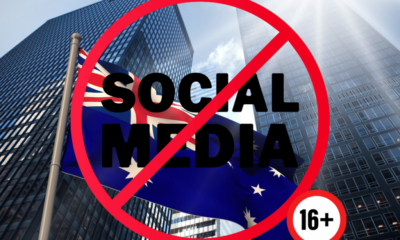Tech
YouTube’s Madcap: Worries About Australia’s Social Media Ban for Minors

Australia has taken a bold step by banning children under 16 from accessing major social media platforms. By 2025, TikTok, Snapchat, Instagram, Facebook, and X will be out of reach for minors. Companies that fail to follow this rule will face heavy penalties. But there’s one surprising exception: YouTube. Is this Australia’s Social Media Ban?
The government sees YouTube as an educational tool rather than a “core social media platform.” After discussions with company executives and children’s content creators, lawmakers made it accessible. Communications Minister Michelle Rowland’s office defended this decision, saying that YouTube is vital for learning and widely accepted as different from traditional social media.
A Law That Blocks, Except for One, Experts Raise the Alarm
Many mental health and extremism researchers strongly disagree. They believe that leaving YouTube open contradicts the ban’s whole purpose of protecting young users from harmful content. Surveys show that YouTube is the most used platform among teenagers in Australia, with nine out of ten between 12 and 17 watching videos regularly.
Lise Waldek, an expert in security studies and extremism, argues that YouTube isn’t just about education and entertainment. “It spreads extremist content, violent material, and even pornography. Its algorithm is designed to be addictive, making young users spend hours consuming content that isn’t always safe,” she warns.
Helen Young, a researcher from Australia studying online radicalisation, agrees. She points out that YouTube’s recommendations often push harmful ideas toward young boys. “The platform’s algorithm has a pattern, it keeps feeding far-right, misogynistic, and anti-feminist content to male users. The more they watch, the deeper they get into these toxic spaces,” she explains.
The Algorithm Test
To understand how YouTube’s algorithm works, a group tested it by creating accounts pretending to be minors. The results were alarming. A simple search on topics like sex and COVID-19 led to extreme conspiracy theories and misogynistic content in just 20 clicks. Searching for “European History” resulted in racist content within 12 hours of casual scrolling.
When looking for harmful content on purpose, it took less than 20 clicks to find misogynistic and racist videos. The researchers flagged these issues to YouTube, which promised to investigate. Out of six problematic videos reported, only one, a neo-Nazi interview, was removed. Another account promoting misogyny was taken down. However, four videos remained online despite violating the platform’s policies.
YouTube’s Defense
In response to criticism, YouTube maintains that it prioritises user safety. A spokesperson stated that their algorithm promotes content that encourages respect while limiting excessive recommendations on specific topics. The company also says its moderation efforts are improving, and its system for detecting harmful content is becoming more aggressive.
Still, if the goal is to protect children, why is the most popular platform among teens left unchecked?
The Question Left to Answer
Australia’s social media ban is one of the strictest in the world. Yet, by exempting YouTube, has the government overlooked a major risk? Experts believe that while the law sounds strong on paper, leaving out the country’s most-used platform might weaken its impact. If social media is dangerous for young minds, shouldn’t all platforms be held to the same standard?
Read more Analysis, Opinions and Exclusive Reports from The Reelstars Here!

















